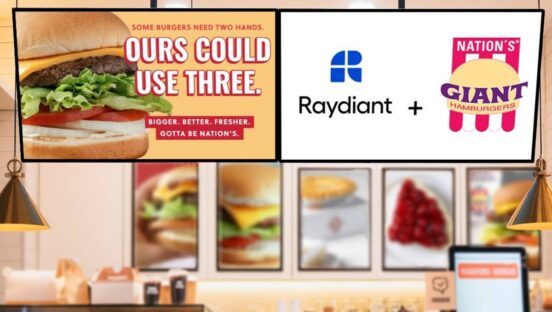Driver shortages, shipping delays, inflation, increased freight costs, material scarcity, and labor shortages. Like most industries, the quick-service-restaurant sector is feeling the crunch of supply-chain issues. Yet, with the ongoing rise in consumerism, the landscape is packed with opportunities for businesses ready to pivot. Here are five tips to turn tricky supply-chain challenges into positive change.
1. Focus on available alternatives.
It’s time to find ways to highlight items that aren’t bottlenecked in the supply chain, whether through promotions or by shaking up the menu to optimize the use of ingredients that are easy to come by. Additionally, now is a great time to tweak customer service to enhance convenience via new staff protocols or strategic technology implementations.
Partners can help you gather data from suppliers and diners to discover untapped revenue sources and examine practices that could use updating. It may be time to redefine how you serve your guests, even if that means revising core elements of your brand.
2. Take advantage of the latest technology.
Quick-service technology is an ever-expanding frontier, from automation and online-ordering systems to forecasting platforms.
Automation can be a great way to augment customer service amidst ongoing staffing shortages. While automation might get a bad rap for “replacing jobs,” another take is that letting technology handle repetitive tasks frees your employees to fulfill more complex, satisfying roles and grow into robust brand ambassadors.
Forecasting platforms are another vital industry resource. With a broad range of data on current and future trends, these platforms let you adjust more nimbly for supply and price fluctuations. They can help your team identify and implement the best platform and metrics for your business.
3. Leverage communication around challenges.
Turn low inventory into an excuse to connect with customers. Providing a quick backstory about a shortage or simply sharing when a product is predicted to be back in stock—rather than making customers feel like they’re just hearing a “no”—can lower frustration and keep the conversation going. Use campaigns and promotions to encourage diners to try other menu items. Remember to share messaging with front-facing staff so they can effortlessly convey consistent messaging.
In-person and email communications are great ways to reach quick-service customers. Updatable signage, customer-service scripts, and email-list building can keep your team prepared to communicate as rapidly as the supply chain ebbs and flows.
4. Share your story.
Authenticity and transparency are exceptionally valued in these uncertain times. Sharing your business’ journey with customers can lead to greater buy-in and loyalty. Don’t be afraid to describe supply-chain hiccups to customers and broadcast the positive changes made as a result. Have you introduced new menu items or updated recipes? Implemented customer-service efficiencies? Started buying more supplies domestically? Make those silver linings part of your ongoing conversation with the public.
5. Embrace the world of ghost kitchens.
Ghost kitchens, also called virtual or dark kitchens, took off at unprecedented rates during COVID-19, meaning there are more ways than ever for you to employ this exciting trend. Combining streamlined food prep with delivery services, ghost kitchens offer a whole new style of revenue stream to keep your business thriving.
Online ordering and delivery automation are key elements of the ghost-kitchen model and an incredible way to gather data about what your customers are responding to.
What’s Next?
Nobody can pinpoint when the supply chain will normalize, but the shifts you make as a result of current challenges can bolster revenue and evolve your business model in powerfully positive ways.
David Coulson is the Senior Vice President of CRM and Digital Experiences at Tandem Theory and is a proven global leader in the digital space who thrives on creating actionable connections between brands and their consumers. With more than 18 years of professional experience, he has garnered a broad background in digital from data and insights, driving business impact through digital transformation, as well as strategic innovation and optimizations at scale.












